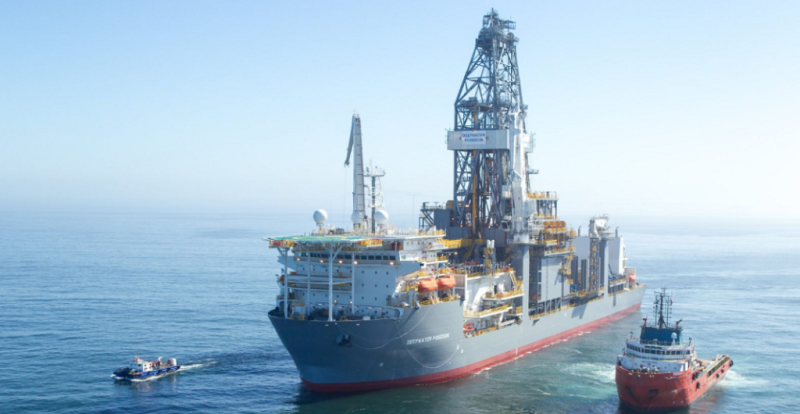Shell’s dominant showing in US Gulf of Mexico Lease Sale 252 resulted in another rise in bids and sum of high bids for the biannual regionwide auction held by the US Bureau of Ocean Energy Management (BOEM).
The sale drew 257 bids on 227 blocks with high bids totaling $244.3 million, up 37% from the last round in August 2018, BOEM announced from New Orleans on 20 March. Thirty companies participated.
The flurry of activity from Shell consisted of 87 high bids totaling $84.8 million, far and away the highest numbers in each category. The company’s two highest bids were for Alaminos Canyon 343, $8.2 million, and Alaminos Canyon 342, $7.2 million.
Equinor placed second in sum of high bids—albeit a distant second—on a mere three bids worth a combined $29.2 million. The Norwegian operator came away with the single highest bid in the round, $24.5 million, on Mississippi Canyon 801, located next to the W&T Offshore-operated Gladden Deep prospect. Mississippi Canyon 801, along with Mississippi Canyon 344, received the most bids, garnering 4 each.
Anadarko Petroleum took Mississippi Canyon 344 for $4.1 million and finished the round as the second most active bidder, submitting 27 high bids worth a combined $24.1 million. Its highest bid was on Mississippi Canyon 783 at $4.6 million.
BP tallied 23 high bids totaling $15.5 million. Hess counted 12 high bids combining at just under $18 million, most of which came from the $10.1-million Mississippi Canyon 684. Two bids from Total amounted to $15 million, including a $9-million submission on Mississippi Canyon 693. Chevron had 8 high bids worth a total $12.4 million.
Notably missing from the round was ExxonMobil, the most active and highest overall bidder of last August’s Lease Sale 251. That sale garnered 171 bids on 141 blocks with high bids totaling $178.1 million, up 43% from the March 2018 sale. Twenty-nine companies took part in the round.
Of the 78.5 million acres on offer in Lease Sale 252, BOEM received bids on 1.3 million acres. "We saw a modest increase in overall spend, but it was outpaced by the increase in acreage, leading to [a] lower [dollar] amount per acre, furthering our hypothesis that it is a buyer’s market in the Gulf of Mexico,” said William Turner, senior research analyst at research and consulting firm Wood Mackenzie, in comments following the event.
“One of the most interesting details of the sale were unique partnerships between majors and smaller players,” he noted, including Kosmos Energy with Equinor, Fieldwood Energy with Chevron, LLOG Exploration with BP, and Talos Energy with Colombia’s Ecopetrol. “This demonstrates a shrinking pool of partners but also an increased willingness of the majors to partner with these [nimbler] players,” he said.
Kosmos and Equinor jointly secured Keathley Canyon 964 on a $7-million high bid. Overall, Kosmos placed 9 high bids at a combined $11.2 million. The Dallas-based operator entered the US gulf last year with its $1.2-billion purchase of Deep Gulf Energy.
Room for Improvement
The increased activity was another step forward for the US offshore industry, but there is still room for improvement, said Randall Luthi, president of the National Ocean Industries Association, in separate comments.
“Lease Sale 252 not only reflects the relatively stable oil prices but also the efforts by the overall industry to cut costs,” he said. “Much of the cost cutting has drastically affected service companies, as their profit margin remains thin or nonexistent.”
Research and consultancy Rystad Energy recently reported that activity for global offshore drillers and seismic companies continues to be constrained by lower exploration interest by operators and a large oversupply of rigs. While drilling demand is rising, day rates haven’t increased enough to underpin a stronger services recovery.
“However, the trajectory of this and the past few sales shows stability and helps establish a new normal for the US offshore industry,” Luthi said. “Companies continue to shore up existing development operations—in both shallow and deep water—in known geologic areas but are not yet ready for heavy investment in truly new deepwater projects.”
With this in mind, Luthi said, US policymakers should do their part to ensure the US offshore segment remains competitive with basins in the Americas off Brazil, Mexico, and Guyana as well as US shale. Citing a recent report from IHS Markit, he noted that the country’s “current federal fiscal structure has rendered the rate of return for US offshore projects, particularly in deepwater areas, less attractive than rates of return in other regions.
“Policymakers should take note and find new ways to attract and retain global investment dollars in the US Gulf of Mexico, an area that has a long history as the gold standard of offshore energy production,” Luthi said.
Top 10 Companies Based on Sum of High Bids
Company | Total High Bids | Sum of High Bids |
|---|---|---|
Shell | 87 | $84,827,644 |
Equinor | 3 | $29,205,659 |
Anadarko | 27 | $24,061,854 |
Hess | 12 | $17,940,072 |
BP | 23 | $15,451,679 |
Total | 2 | $15,006,020 |
Chevron | 8 | $12,415,760 |
Kosmos | 9 | $11,201,811 |
Beacon Offshore | 7 | $5,311,709 |
Murphy | 5 | $4,743,935 |

